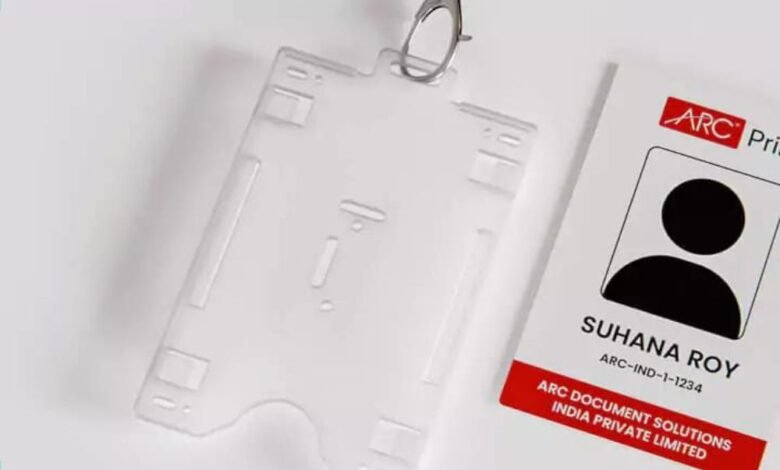
Identification cards, or ID cards, play a crucial role in modern society, serving as a means of verifying identity and granting access to various facilities and services. Whether used for employee identification, student identification, or access control, ID cards are essential tools for maintaining security and ensuring the smooth operation of organizations. However, the process of ID card printing involves a delicate balance between security measures and user convenience. In this comprehensive guide, we will explore the various factors involved in ID card printing and how organizations can strike the right balance between security and user convenience.
Understanding the Importance of ID Cards
Before delving into the intricacies of ID card printing, it’s essential to understand why ID cards are so crucial in today’s world. ID cards serve multiple purposes, including:
Verification of Identity:
ID cards provide a visual means of confirming an individual’s identity, helping to prevent unauthorized access to secure areas or sensitive information.
Access Control:
ID cards are used to grant access to restricted areas within organizations, such as office buildings, laboratories, or data centers. By implementing access control systems, organizations can regulate entry and ensure only authorized personnel can enter designated areas.
Tracking Attendance:
ID cards are often used to track employee or student attendance, allowing organizations to monitor attendance patterns, track work hours, and generate reports for payroll or academic purposes.
Enhancing Branding:
ID cards can also serve as a form of branding, featuring logos, colors, and other design elements that reflect the identity of the organization. Branded ID cards help foster a sense of belonging and pride among employees or students.
Security Considerations in ID Card Printing
Security is paramount when it comes to ID card printing, as these cards often serve as the first line of defense against unauthorized access and identity theft. Several security features can be incorporated into ID cards to enhance their integrity and prevent counterfeiting or tampering. These security features include:
Holographic Overlays:
Holographic overlays are thin, transparent layers that can be applied to ID cards to create three-dimensional images or patterns. These overlays are difficult to replicate and provide visual authentication of the card’s authenticity.
UV Printing:
UV printing is a technique that utilizes ultraviolet (UV) ink to print invisible images or text on ID cards. These hidden features remain undetectable under normal lighting conditions but become visible when exposed to UV light. This unique characteristic makes UV printing an effective anti-counterfeiting measure, as it adds an additional layer of security to ID cards.
By incorporating hidden UV elements into the design, such as logos, patterns, or text, organizations can deter counterfeiters and enhance the authenticity of their ID cards. UV printing offers a discreet yet powerful method of authentication, allowing administrators to quickly and easily verify the legitimacy of an ID card by using a UV light source. As a result, UV printing serves as a valuable tool in the fight against fraudulent activities and helps protect the integrity of ID card systems.
Microtext:
Microtext consists of tiny, illegible text printed on ID cards using specialized printing techniques. This is often used to print security details such as the cardholder’s name or the organization’s logo, which are difficult to reproduce accurately.
Embedded Security Chips:
Some ID cards feature embedded security chips or RFID (Radio Frequency Identification) tags that store encrypted information about the cardholder. These chips can be used for secure authentication and access control purposes.
Balancing Security with User Convenience
While security is essential, organizations must also consider user convenience when designing and printing ID cards. A balance must be struck between implementing robust security measures and ensuring that ID cards are user-friendly and practical for everyday use. Here are some strategies for achieving this balance:
Simplified Design:
User-Friendly Features:
Easy Replacement Procedures:
Implement streamlined procedures for replacing lost or damaged ID cards to minimize disruption to users. Provide clear instructions for reporting lost or stolen cards and expedite the issuance of replacement cards to affected individuals.
Mobile ID Solutions:
Consider adopting mobile ID solutions that allow users to access digital versions of their ID cards on their smartphones or other mobile devices. Mobile ID solutions offer greater flexibility and convenience, allowing users to access their credentials anytime, anywhere.
Conclusion
ID card printing is a complex process that requires careful consideration of security requirements and user needs. By striking the right balance between security measures and user convenience. Organizations can ensure that their ID cards are both effective tools for verifying identity and practical tools for everyday use. With the proper security features, streamlined procedures, and user-friendly design. ID cards can continue to serve as invaluable assets in maintaining security and facilitating access control in various organizational settings.




